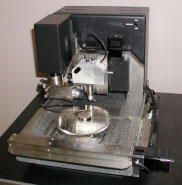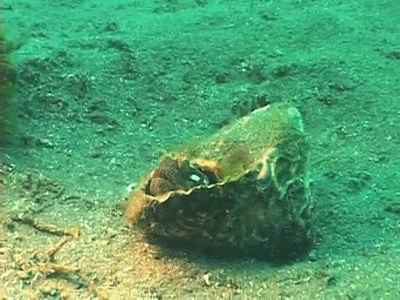WHAT IS NANOTECHNOLOGY.
Nanotechnology is science, engineering, and technology conducted at the nanoscale, which is about 1 to 100 nanometers.
Physicist Richard Feynman, the father of nanotechnology.
|
Nanoscience and nanotechnology are the study and application of extremely small things and can be used across all the other science fields, such as chemistry, biology, physics, materials science, and engineering.
HOW IT STARTED.
The ideas and concepts behind nanoscience and nanotechnology started with a talk entitled “
There’s Plenty of Room at the Bottom” by physicist Richard Feynman at an American Physical Society meeting at the California Institute of Technology (CalTech) on December 29, 1959, long before the term nanotechnology was used. In his talk, Feynman described a process in which scientists would be able to manipulate and control individual atoms and molecules. Over a decade later, in his explorations of ultraprecision machining, Professor Norio Taniguchi coined the term nanotechnology. It wasn't until 1981, with the development of the scanning tunneling microscope that could "see" individual atoms, that modern nanotechnology began.
CONCEPTS OF NANOTECHNOLOGY.
| Medieval stained glass windows are an example of how nanotechnology was used in the pre-modern era. (Courtesy: NanoBioNet) |
- There are 25,400,000 nanometers in an inch
- A sheet of newspaper is about 100,000 nanometers thick
- On a comparative scale, if a marble were a nanometer, then one meter would be the size of the Earth
Nanoscience and nanotechnology involve the ability to see and to control individual atoms and molecules. Everything on Earth is made up of atoms—the food we eat, the clothes we wear, the buildings and houses we live in, and our own bodies.
But something as small as an atom is impossible to see with the naked eye. In fact, it’s impossible to see with the microscopes typically used in a high school science classes. The microscopes needed to see things at the nanoscale were invented relatively recently—about 30 years ago.
SIZE OF NANOTECHNOLOGY.
Just how small is “nano?” In the International System of Units, the prefix "nano" means one-billionth, or 10-9; therefore one nanometer is one-billionth of a meter. It’s difficult to imagine just how small that is, so here are some examples:
- A sheet of paper is about 100,000 nanometers thick
- A strand of human DNA is 2.5 nanometers in diameter
- There are 25,400,000 nanometers in one inch
- A human hair is approximately 80,000- 100,000 nanometers wide
- A single gold atom is about a third of a nanometer in diameter
- On a comparative scale, if the diameter of a marble was one nanometer, then diameter of the Earth would be about one meter
- One nanometer is about as long as your fingernail grows in one second
The illustration below has three visual examples of the size and the scale of nanotechnology, showing just how small things at the nanoscale actually are.
Beginning as early as the 1930s, scientists were able to see at the nanoscale using instruments such as the scanning electron microscope, the transmission electron microscope, and the field ion microscope. The most recent and notable developments in microscopy are the scanning tunneling microscope and the atomic force microscope.
The electron microscope, first developed by German engineers Ernst Ruska and Max Knoll in the 1930s, uses a particle beam of electrons to illuminate a specimen and create a highly magnified image. Electron microscopes yield much greater resolution than the older light microscopes; they can obtain magnifications of up to 1 million times, while the best light microscopes can magnify an image only about 1,500 times.
The scanning tunneling microscope (STM) is among a number of instruments that allows scientists to view and manipulate nanoscale particles, atoms, and small molecules. Its development earned its inventors, Gerd Binig and Heinrich Rohrer, the Nobel Prize in Physics in 1986.
Atomic force microscopes (AFMs) gather information by "feeling" the surface with a mechanical probe. Gerd Binig, along with Calvin Quate and Christoph Gerber, developed the first AFM in 1986.
 |
Atomic Force Microscope
|
These microscopes make use of tiny but exact movements to enable precise mechanical scanning.
BY SEEING THIS VIDEO YOU KNOW WHAT IS NANOTECHNOLOGY.
.














